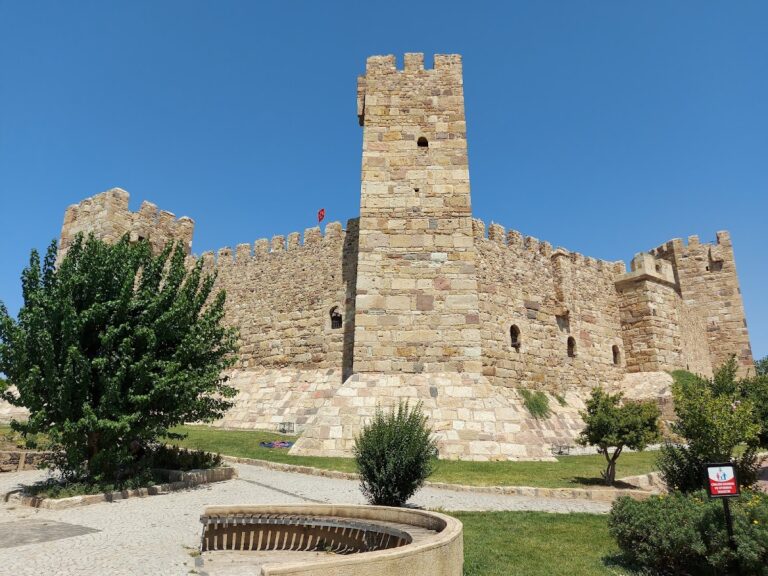Kadifekale: The Ancient Castle and Acropolis of İzmir
Visitor Information
Google Rating: 4.2
Popularity: Medium
Google Maps: View on Google Maps
Official Website: www.izmirkulturturizm.gov.tr
Country: Turkey
Civilization: Unclassified
Remains: Military
History
Kadifekale is a castle located on Pagos Hill in the municipality of Konak, İzmir, Turkey. It was originally constructed by the ancient Greeks as part of the city of Smyrna, serving as the acropolis or fortified high point overlooking the settlement below.
The earliest fortifications at Kadifekale date back to the late 4th or early 3rd century BCE and are attributed to Lysimachus, one of Alexander the Great’s successors who became ruler over Thrace and parts of Asia Minor. This building phase coincided with the relocation of Smyrna’s main settlement from its former coastal site near the gulf to the more defensible heights of Pagos Hill. According to a tradition recorded by the ancient geographer Pausanias, this move followed a divine vision experienced by Alexander the Great, who was advised by the oracle at Klaros to establish the city on the hill. Despite this, ancient accounts such as that of Strabo indicate that only a small part of Smyrna’s population lived on the hill itself, with the bulk of the city remaining situated around the harbor area.
Throughout its history, the hilltop settlement and the harbor district followed somewhat separate courses. In the 14th century, the castle came under the control of the Aydinid dynasty, a Turkish principality, while the coastal harbor was governed by Genoese merchants until Timur’s conquest of the region in 1403. The castle walls visible today date primarily from the medieval period, although some ancient Hellenistic masonry fragments are claimed to remain beneath them. Ruins of Roman-era water cisterns found at the site were maintained and restored during Byzantine and Ottoman times, playing a crucial role in supplying water to Smyrna.
By the 19th century, Kadifekale formed part of a ring of hills that encompassed İzmir’s predominantly Turkish neighborhoods, in contrast to the more diverse, cosmopolitan areas near the city center. In the 20th and early 21st centuries, the neighborhoods surrounding the castle, historically inhabited by Kurdish migrants and regarded as slums, underwent significant urban renewal. Restoration efforts on the castle itself began in 2007 and continued with projects in the 2010s, including lighting installations along the walls and the restoration of historic cisterns and a mosque. Since 2019, the castle area has hosted a weekly producers’ market. In 2020, Kadifekale was recognized by UNESCO through its inclusion on the tentative list as part of the “Historic Port City of İzmir.”
Remains
Kadifekale’s layout reflects its role as a fortified acropolis atop Pagos Hill, constructed with stone and brick. The most prominent surviving elements are the castle’s western and southern walls, which incorporate five towers reaching heights between 20 and 35 meters. These defensive walls exhibit techniques consistent with medieval construction, though parts are thought to contain remnants of earlier Hellenistic masonry, a detail noted by some scholars though not universally agreed upon.
Among the most significant architectural features are the extensive Roman-era cisterns carved directly into the andesite bedrock beneath the castle. These cisterns include a large covered reservoir measuring approximately 2,650 square meters, supported by forty columns arranged beneath a roof framed by rectangular arches that rest on robust, elephantine pillars. This underground water storage had a capacity near 750 cubic meters and was integral to Smyrna’s water system, with evidence of aqueducts and pipelines extending downhill toward the city’s ancient agora. These cisterns saw continued use and maintenance through Byzantine and Ottoman periods, underscoring their long-standing importance.
The castle’s strategic position atop Pagos Hill offers expansive views across modern İzmir and the Gulf of İzmir. The area immediately west of the fortress preserves a long depression marking where the ancient stadium once lay, though this space is now fully built over. To the east of the castle’s main gate, the remains of the ancient theater are scant; surviving fragments stem from rebuilding efforts after a substantial earthquake in 178 CE.
Throughout the centuries, the castle and its associated infrastructure underwent various restorations, including in recent decades, when efforts aimed to preserve the walls, cisterns, and a historic mosque within the site. These combined features reflect Kadifekale’s layered history as a military stronghold, civic center, and vital component of Smyrna’s urban fabric.










